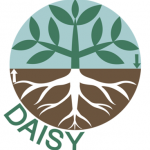Daisy
Efstathios Diamantopoulos, Per Abrahamsen, and Søren Hansen (UCPH)
Overview
| Model category | CSM |
|---|---|
| Plant part | Whole_plant |
| Scale | Field |
| Licence | open_source |
| Operating system | MacOs, Windows, Linux |
| Programming language | Cpp |
| Format of model inputs and outputs | Text files |
| Species studied | Barley, Wheat |
| Execution environment | Console |
Scientific article
Daisy: Model Use, Calibration, and ValidationS. Hansen,P. Abrahamsen,C. T. Petersen,M. StyczenAmerican Society of Agricultural and Biological Engineers, 2012 View paper
Model description
Daisy is a mechanistic simulation model of the physical and biological processes in an agricultural field. It traces the fate of water, energy, carbon, nitrogen, and pesticides, both above and below ground. The model is able to predict production, environmental impact in the form of leaching, and change in soil (carbon) quality over time. Another common use is as an upper boundary for a groundwater model. The input to Daisy is through text files of daily or hourly weather data (at least precipitation, global radiation, and temperature, much more can be used if available), management information (sow/harvest, tillage operations, as well as data and amounts of irrigation, fertilizer and pesticide applications), and finally soil quality (texture, humus content). The timescale go from hourly fluxes to changes in soil carbon pools over centuries. Output is also text files, with the exception of simple progress messages during the simulation. The code can be accesses from a command line utility, a simple GUI (Qt based), or from another program through C, Cpp, C# or OpenMI interfaces. The default one dimensional Daisy transport model assumes homogeneous fields, with no significant horizontal transport. An optional two dimensional transport model exists is included, and has been used for simulating row crops and drain pipes. To model larger areas, Daisy should be coupled with a GIS system. Daisy is developed by members of the Agrohydrology research group at the Section for Environmental Chemistry and Physics at the Department for Plant and Environmental Sciences at the Faculty of Science at University of Copenhagen. The primary responsible scientist is Søren Hansen.
Some case studies
Some recent studies using Daisy can be found on the Daisy website (https://daisy.ku.dk/publications/)
